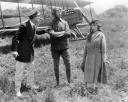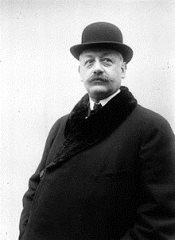By Dennis Sparks
Another top-quality build Dennis! Thank you so much for the article -AB
Beginning in 1909, almost all of the first aeroplanes that had been acquired by the US Army Signal Corps were either Wright or Curtiss “pusher” designs, with engines that were situated behind the pilot. As might be expected with this new technology, during the first five years of flight operations crashes were both frequent and too often fatal. Realizing that the location of the engine was a factor in some of the fatalities, on 25 February 1914 the Army grounded all of their remaining “pusher” aircraft, leaving them with almost no aircraft to fly.
Curtiss Model D Pusher (courtesy Wikipedia)
Seeking to purchase safer aircraft, both Martin and Curtiss responded to the Army request with designs for two-seat biplane trainers with the engine and a “tractor” propeller mounted in the front of the aircraft. The Army bought three Martin Model T aircraft, which curiously enough were specified to be delivered without engines, as for reasons of economy, they wanted to re-use some of the engines that had been salvaged from crashed aircraft. Later the Army purchased an additional fourteen Martins which were to be delivered with a variety of new-built engines. And while both the Army and the Navy also later acquired a few examples of the Martin Model S floatplane which shared a common heritage with the Model T, the type has largely faded into obscurity.
Martin Model T (from the movie A Girl Of Yesterday) and Model S – click to enlarge (courtesy Wikipedia)
Continue reading “A “Classic Build” of a 1/48th Lindberg Curtiss JN-4 Jenny”


